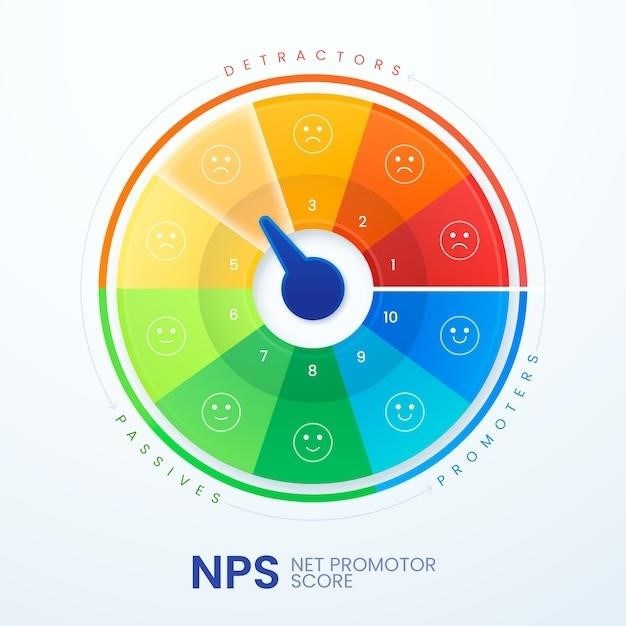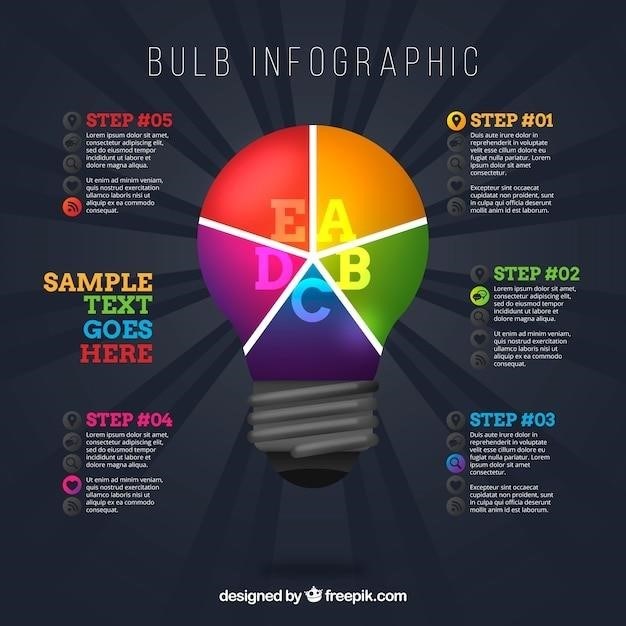Software Engineering Fundamentals
Software engineering employs scientific principles and methods for efficient software development. It’s crucial for creating high-quality software cost-effectively. Various software life cycle models‚ design principles‚ and methodologies are core components. Myths and misconceptions surrounding software development are also addressed.
Software engineering principles are foundational to building robust and reliable software systems. These principles emphasize a structured and systematic approach‚ moving beyond simple coding to encompass the entire software lifecycle. Key principles include modularity‚ promoting independent components for easier maintenance and updates; abstraction‚ simplifying complex systems through layered representations; and information hiding‚ protecting internal details of modules for enhanced security and stability. Furthermore‚ the principles of separation of concerns‚ where different aspects of the system are handled independently‚ and the use of well-defined interfaces for seamless component interaction are paramount. These core principles‚ along with rigorous testing and documentation‚ underpin the creation of efficient‚ maintainable‚ and scalable software solutions. Understanding and applying these principles is vital for any aspiring software engineer.
The Evolving Role of Software and its Changing Nature
Software’s role has dramatically expanded beyond simple automation. Initially confined to specific tasks‚ software now permeates nearly every aspect of modern life‚ driving complex systems across various sectors. This evolution demands adaptability and continuous learning from software engineers. The increasing interconnectedness of systems necessitates robust security measures and sophisticated testing methodologies. Furthermore‚ the demand for user-friendly interfaces and seamless integration across platforms is ever-growing. Software development has transitioned from waterfall methodologies to more agile approaches‚ enabling faster iterations and increased responsiveness to evolving user needs. This shift reflects the dynamic nature of software itself‚ constantly adapting to technological advancements and societal changes. The rise of cloud computing‚ mobile technologies‚ and artificial intelligence presents both opportunities and challenges for software engineers‚ demanding new skills and innovative solutions. The accelerating pace of technological change underscores the need for continuous professional development in this field.
Common Software Myths and Misconceptions
A prevalent myth is that adding more developers to a late project speeds up its completion. This often backfires‚ increasing complexity and communication overhead. Another misconception is that thorough documentation is unnecessary; however‚ comprehensive documentation is crucial for maintainability and future development. The belief that software engineering is purely coding is also inaccurate. It encompasses a broader range of activities including requirements gathering‚ design‚ testing‚ and deployment. There’s a false assumption that fixing bugs is simple and quick; in reality‚ debugging can be time-consuming and complex‚ requiring meticulous analysis. The idea that only highly skilled programmers are needed neglects the importance of teamwork and collaboration. Effective software engineering requires a diverse team with complementary skills. Finally‚ believing that software development is solely a creative endeavor undervalues the importance of structured processes and engineering principles. Successful software development requires a blend of creativity‚ discipline‚ and robust methodologies. Addressing these misconceptions is key to effective software engineering practice.
Software Development Life Cycle (SDLC) Models
This section explores various SDLC models‚ including Waterfall‚ iterative (Agile and incremental)‚ and Spiral models. Each model offers a unique approach to software development‚ catering to different project needs and risk profiles.
Waterfall Model⁚ A Classic Approach
The Waterfall model‚ a linear-sequential approach‚ represents a classic SDLC methodology. Each phase—requirements‚ design‚ implementation‚ verification‚ and maintenance—must be completed before the next begins. This structured approach is well-suited for projects with clearly defined‚ stable requirements. Its simplicity and ease of understanding make it a popular choice for smaller projects or those with minimal anticipated changes. However‚ the Waterfall model’s inflexibility can be a significant drawback. Changes made late in the development cycle can be costly and time-consuming to implement. The lack of iterative feedback loops means that potential problems may not be identified until later stages‚ leading to potential delays and budget overruns. Furthermore‚ the rigid structure can hinder collaboration and adaptability to evolving needs; While its sequential nature provides a clear roadmap‚ the Waterfall model’s limitations emphasize the importance of thorough upfront planning and a stable project scope.
Iterative Models⁚ Agile and Incremental Development
In contrast to the Waterfall model’s rigid linearity‚ iterative models embrace flexibility and adaptability. Agile methodologies‚ such as Scrum and Kanban‚ prioritize iterative development cycles‚ incorporating frequent feedback and adjustments. Short sprints‚ typically lasting a few weeks‚ focus on delivering functional increments of the software. This iterative approach allows for continuous improvement and reduces the risk of significant deviations from the initial requirements. Incremental development‚ another iterative approach‚ builds the software in a series of increments‚ each adding new functionality. This modular approach simplifies testing and integration‚ making it easier to manage complexity. Both Agile and incremental development emphasize collaboration‚ communication‚ and rapid response to change. The iterative nature allows for continuous refinement based on user feedback and evolving needs‚ making them ideal for complex projects or those with evolving requirements. However‚ the iterative nature requires strong team communication and commitment to adapt to changing priorities.
Spiral Model⁚ Managing Risk in Software Projects
The Spiral Model distinguishes itself through its explicit emphasis on risk management‚ a critical aspect often overlooked in other SDLC models. This iterative model incorporates risk assessment and mitigation strategies at each stage of development. The project proceeds through cyclical phases‚ each involving planning‚ risk analysis‚ engineering‚ and evaluation. Risk analysis plays a pivotal role‚ identifying potential problems and developing solutions before they escalate into major issues. This iterative process allows for flexibility in adapting to changing requirements and emerging risks. The spiral’s iterative nature enables early detection of problems‚ reducing costs and delays associated with late-stage discoveries. While offering significant advantages in risk management‚ the Spiral Model’s complexity can make it less suitable for smaller projects with well-defined requirements. The need for extensive risk analysis can increase the project’s overall duration and cost. Therefore‚ careful consideration of the project’s scale and complexity is essential before adopting the Spiral Model.
Software Requirements and Specifications
This section details the crucial process of defining and documenting software requirements. It covers gathering‚ analyzing‚ and validating these requirements to ensure the final product meets user needs and expectations‚ creating a robust Software Requirements Specification (SRS) document.
Gathering and Analyzing Requirements
The foundation of any successful software project lies in a thorough understanding of its requirements. This crucial initial phase involves systematically gathering information from various stakeholders‚ including clients‚ end-users‚ and domain experts. Techniques employed range from informal interviews and brainstorming sessions to formal elicitation methods like questionnaires and use case modeling. The goal is to capture both functional requirements‚ which describe what the software should do‚ and non-functional requirements‚ which specify how it should perform (e.g.‚ performance‚ security‚ usability). Careful analysis of gathered information is paramount to identify ambiguities‚ conflicts‚ and inconsistencies. This often involves modeling requirements using tools like UML diagrams or data flow diagrams to visualize the system’s behavior and data interactions. The result of this meticulous process is a clear and concise representation of the software’s intended functionality and constraints‚ paving the way for effective design and development.
Creating a Software Requirements Specification (SRS) Document
Techniques for Validating Requirements
Validating software requirements ensures they are correct‚ complete‚ consistent‚ unambiguous‚ feasible‚ and traceable. Several techniques help achieve this. Prototyping involves creating a working model of the software to validate user interface and functionality. Reviews and walkthroughs facilitate collaborative examination of the requirements document‚ identifying inconsistencies and omissions. Formal methods employ mathematical notations to model the system and rigorously verify its properties. Use case testing focuses on verifying the system’s behavior through various scenarios. User acceptance testing (UAT) allows end-users to evaluate the system’s functionality and usability. Inspections involve detailed reviews by a team of experts to identify potential issues. Modeling techniques‚ like UML diagrams‚ visually represent the system’s architecture and data flow‚ aiding in requirement validation. Simulation allows testing the system’s performance under different conditions‚ validating its ability to meet non-functional requirements. Consistency checks ensure no conflicts exist between various requirements. Traceability matrices track the flow of requirements from their origin to design and implementation‚ ensuring completeness and avoiding gaps. These validation techniques‚ when used effectively‚ minimize errors and ensure the software meets its intended purpose.
Software Design and Architecture
Software design principles and methodologies guide the creation of a robust and maintainable system architecture. Architectural patterns and styles influence the overall structure‚ while UI design ensures user-friendliness and efficiency.
Software Design Principles and Methodologies
Effective software design hinges on a set of guiding principles that prioritize modularity‚ maintainability‚ and scalability. These principles‚ often intertwined with specific methodologies‚ aim to create a structured and understandable system. Modularity‚ a cornerstone of good design‚ involves breaking down complex systems into smaller‚ manageable modules with well-defined interfaces. This approach simplifies development‚ testing‚ and future modifications. Abstraction‚ another vital principle‚ focuses on hiding unnecessary details and presenting only essential information to the user or other modules. This simplifies interaction and reduces complexity. Encapsulation bundles data and the methods that operate on it‚ protecting data integrity and promoting code reusability. Furthermore‚ well-defined interfaces enable seamless integration of modules and facilitate independent development and testing. Design patterns provide proven solutions to recurring design problems‚ fostering efficiency and consistency. Object-oriented design (OOD)‚ a widely adopted methodology‚ utilizes classes and objects to represent real-world entities‚ enhancing code organization and maintainability. Structured design emphasizes hierarchical decomposition of tasks into smaller sub-tasks‚ improving clarity and control flow. Agile methodologies‚ such as Scrum and XP‚ promote iterative development and continuous feedback‚ allowing for flexibility and adaptation to changing requirements. Each methodology offers a unique approach‚ and the choice depends on project needs and team expertise. The selection of appropriate design principles and methodologies is crucial for delivering high-quality‚ adaptable‚ and cost-effective software solutions.
Architectural Patterns and Styles
Software architecture patterns provide high-level blueprints for structuring a system‚ influencing its overall design and behavior. Choosing the right architectural pattern is crucial for achieving scalability‚ maintainability‚ and performance goals. The layered pattern organizes components into distinct layers‚ each with specific responsibilities‚ promoting modularity and reusability. The client-server pattern distributes functionality between clients and a central server‚ enabling centralized data management and resource sharing. Microservices architecture decomposes applications into small‚ independent services‚ improving scalability and fault tolerance. The event-driven architecture relies on asynchronous communication between components through events‚ enhancing responsiveness and flexibility. The pipe-and-filter pattern connects components that process data sequentially‚ facilitating modularity and parallel processing. Model-view-controller (MVC) separates concerns into model (data)‚ view (presentation)‚ and controller (user interaction)‚ improving maintainability and testability. Each pattern has its strengths and weaknesses‚ making the selection highly dependent on the specific requirements of the software project. Factors like scalability needs‚ security considerations‚ and deployment environment significantly influence the choice. Understanding these patterns allows software architects to make informed decisions‚ leading to robust‚ efficient‚ and maintainable software systems. The documentation of architectural choices is vital for team collaboration and future system evolution.
User Interface (UI) Design Considerations
Effective UI design is paramount for a positive user experience. Key considerations include usability‚ accessibility‚ and aesthetics. Usability focuses on ease of use and efficiency‚ ensuring users can readily accomplish tasks. Clear navigation‚ intuitive controls‚ and consistent design elements are essential. Accessibility addresses the needs of users with disabilities‚ adhering to guidelines for visual‚ auditory‚ motor‚ and cognitive impairments. Providing alternative text for images‚ keyboard navigation‚ and sufficient color contrast are crucial aspects. Aesthetics contribute to an appealing and engaging interface‚ using visual elements like typography‚ color palettes‚ and imagery to create a cohesive and pleasant experience. Consistency in design elements across the application enhances usability and reinforces brand identity. User feedback mechanisms‚ such as surveys or in-app feedback forms‚ are valuable for iterative improvement. Usability testing with representative users helps identify areas for refinement. Regularly reviewing and updating the UI to align with evolving user needs and technological advancements is essential for long-term success. By prioritizing these considerations‚ developers create interfaces that are not only functional and efficient but also user-friendly and enjoyable.


